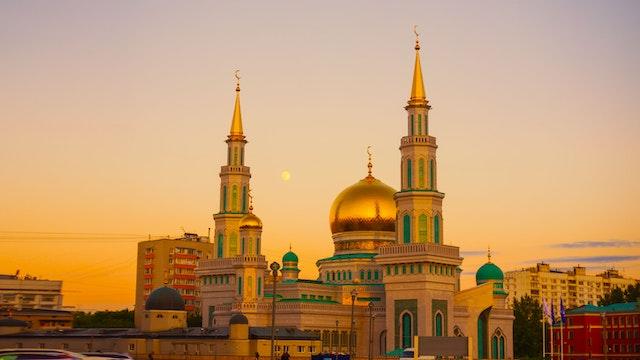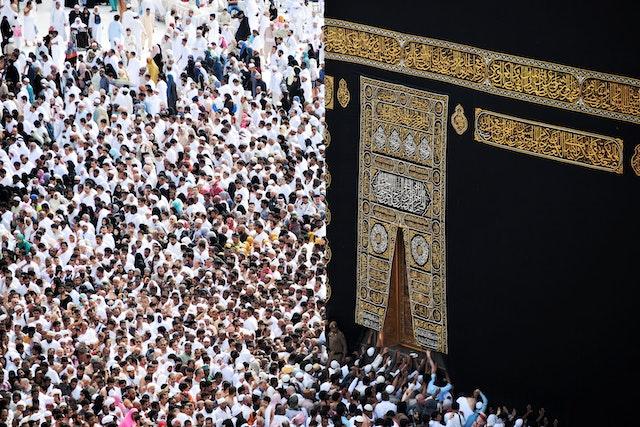
Are you proud to be Muslim? Would you like to understand how the spread of Islam has affected the world? How did Islam spread across North Africa, Asia and parts of Europe?
Trade played a significant role in the spread of Islam, especially through Africa and Asia, as Muslim traders exchanged spices, gold, and slaves.
Being allied with Muslim traders, who were often more powerful and profitable than others of different faiths, was advantageous for rulers and merchants wishing to convert to the religion.
Islam’s spread was gradual over the course of centuries. But, many of the people who converted to Islam back then still practice Islam today.
How did Islam spread so quickly?
Islam is one of the world’s largest religions, with over 1.6 billion followers worldwide. But how did this religion spread so quickly?
There are a number of factors that contributed to the spread of Islam.
First, the principles and beliefs of Islam are attractive to many people. Muslims believe in one God, without associating partners, and belief in all prophets such as Abraham, Moses, and Jesus (peace be upon them all).
Islam also offers equality for men and women and encourages charity for those less fortunate. These beliefs attracted many individuals and communities to convert to Islam.
In addition, the military expansion of Muslim empires also played a role in spreading Islam.
Though forced conversions were not allowed, those who submitted to Muslim rule were often given incentives to convert, such as tax exemptions and increased social status.
As Islam spread to new regions through conquest, more and more people were exposed to the religion and converted to it.
Over time, these factors combined to allow Islam to spread quickly and become one of the world’s largest religions.
- Read also: When Was Thanksgiving First Celebrated
- Read also: Who Discovered the Earth is Round
How did Islam spread to Africa?

Islam first spread to Africa through trade. Muslim merchants traveled throughout the continent, spreading their faith and ideas to those they encountered.
As Islam spread through trading cities like Timbuktu and Kilwa, rulers also converted to the religion and helped spread its influence.
In addition, some African communities converted to Islam as a way of resisting European colonization. Adopting the religion allowed them to resist cultural assimilation and maintain their own distinct identity.
Today, Islam is the dominant religion in North Africa and parts of sub-Saharan Africa, with over half of the continent’s population identifying as Muslim.
It continues to spread through both trade and individual conversions, as well as being passed down through families.
How did Islam spread to Asia?
Islam first spread to Asia through trade and the actions of Muslim merchants.
They traveled along the Silk Road, spreading their faith and ideas to those they encountered in cities like Damascus, Baghdad, and Istanbul.
In addition, the expansion of the Ottoman Empire helped spread Islam throughout Asia.
As they conquered new regions, including parts of Eastern Europe, North Africa, and the Middle East, they brought Islam with them and allowed its spread to continue.
How did Islam spread to Europe?
Islam first spread to Europe through the expansion of the Ottoman Empire. As they conquered regions in Eastern Europe, such as Bulgaria and Bosnia, they brought Islam with them and allowed its spread to continue.
In addition, Muslim traders and merchants also played a role in spreading Islam throughout Europe.
They traveled along the Mediterranean trade routes, spreading their faith and ideas to those they encountered in cities like Venice and Barcelona.
How did the spread of Islam affect the World?

The spread of Islam had a significant impact on the world. In terms of politics, it led to the creation and expansion of Muslim empires, such as the Ottoman Empire, that greatly influenced global history.
In terms of culture, it brought new ideas and artistic styles to regions that adopted Islam, such as Islamic architecture and intricate calligraphy.
It also had a significant impact on the economy, as Muslim traders and merchants played an important role in global trade networks.
Islam also brought a new religious perspective to the world, with its beliefs and principles attracting converts from various backgrounds and cultures.
This has led to Islam becoming one of the largest and most widespread religions in the world.
- Read also: The History Of Pandemics
- Read also: The History Of Halloween
Final thought
Islam is one of the world’s major religions, with over 1.5 billion followers worldwide. The religion originated in the Arabian Peninsula, and its teachings quickly spread throughout the Middle East and North Africa.
Islam continued to grow in popularity, and by the end of the 7th century, it had reached as far as Spain in the west and India in the east.
There are a number of reasons for Islam’s continued spread; its simple message appeals to many people, and its focus on social justice and equality attracts those who were looking for a fairer way of life.
In addition, Islam’s offer of salvation to all believers regardless of their background or nationality was very appealing to many people. As a result, Islam continues to grow in popularity, with new converts joining the faith every day.


